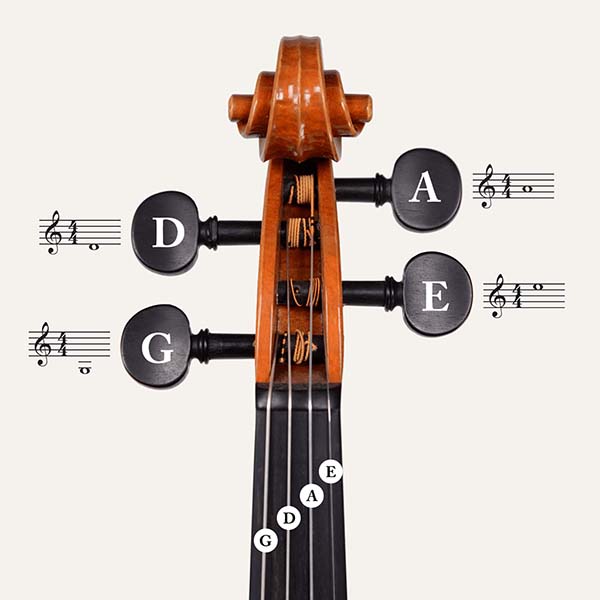Video Tutorial:
Putting on New Violin Strings
For beginners, tuning and changing strings is a scary affair! Both actions risk breaking the strings; we've all had that non-sensical nightmare -- the string ricochets off the nut and hits us in the eye.
However, putting on your new set of strings doesn't have to be like starring in a horror movie. Here are the steps:
- Hold your violin in your lap with the scroll up and fingerboard facing your body. Make sure a stable surface such as a table is in front of you.
- Take out one string at a time. If you take out all the old strings, the bridge will fall. Then you'll have to watch our other video, resurrecting a fallen bridge.
- Remove the old string; I suggest starting with the middle strings (A or D). Loosen the peg, turning it counterclock-wise, or back towards you. Once the string is very loose, you can pull it from out of the peg first, then take the bottom out of the tailpiece.
- Make sure the right string goes in the correct position - G, D, A, and E-string (left to right).
- Some people like to put the new string in the tailpiece first, then place it through the hole of the peg in the scrollbox. Although, Fiddlerman and many other violinists will start from the peg.
- Make sure the string is in the appropriate grooves on the bridge and nut of the fingerboard. This is the string's proper position.
- Place about a half-inch of the string through the hole in the peg, then begin to wind it around the peg. To do this, SLOWLY turn the peg clockwise or away from your body. See video below for securing the string on the peg.
- Make sure the winding is in the middle or closer to the larger end of the peg, so it doesn't touch other strings in the scrollbox.
- As you tune the peg, make sure the bridge is not pulling forward. Move it back to proper position.
Watch Fiddlerman demonstrate below.
Please contact Fiddlershop via our chat system, support@fiddlershop.com or







